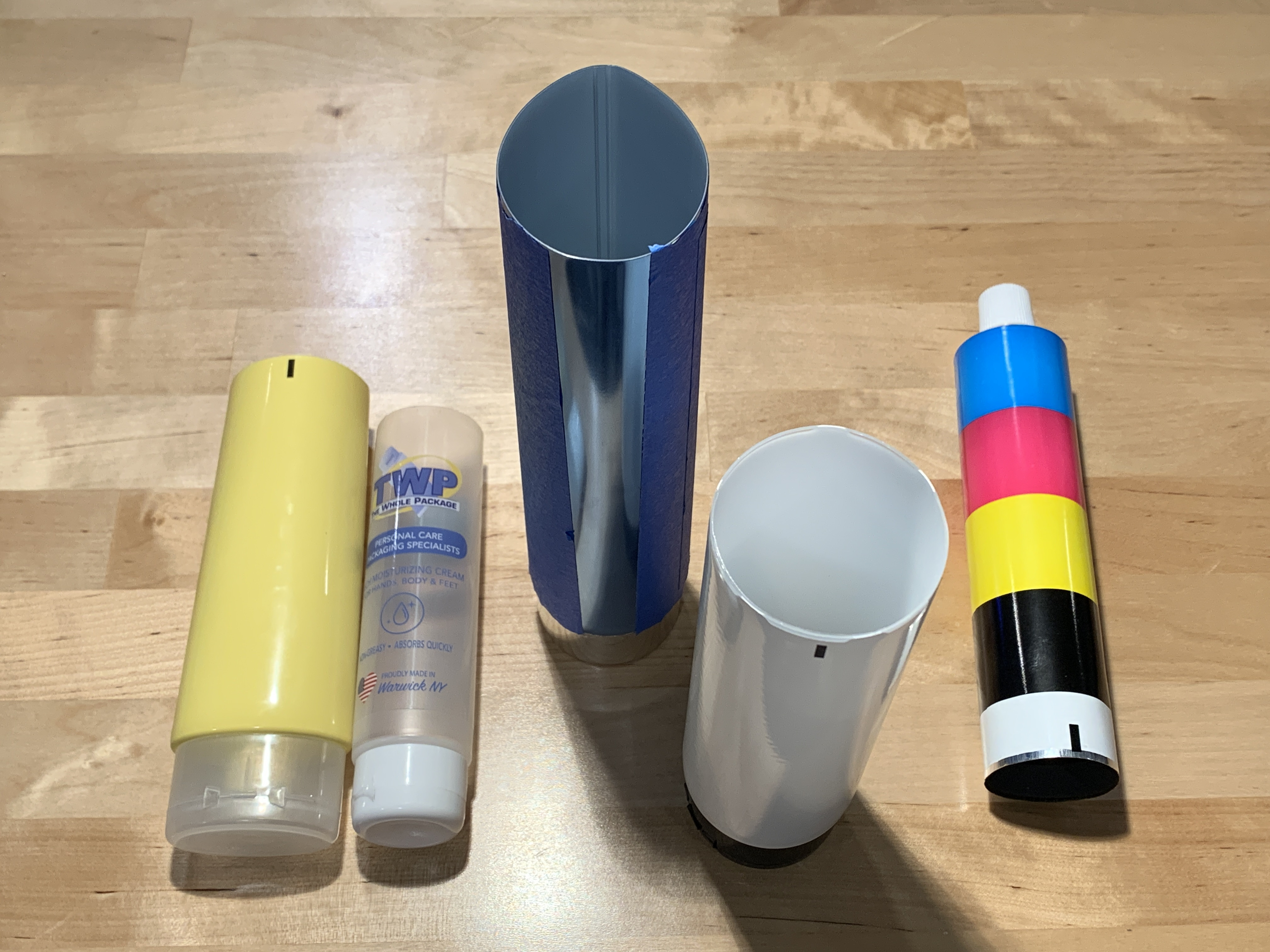April 11, 2023

Squeeze tubes are constantly growing in popularity due to their many advantages over traditional containers such as bottles and jars. They are cheaper to produce than bottles and jars, and are capable of being used with cosmetic products, pharmaceutical products, CBD products, etc. The most common squeeze tubes are extruded plastic tubes, laminated tubes, aluminum tubes, and in-mold label (IML) tubes. The video below showcases examples of each style of squeeze tube.
Extruded Plastic Tubes
Extruded plastic tubes are one of the most common container types across many industries. Extruded tubes are typically produced from a five-layer co-extruded polyethylene, and are available in both round and oval shapes. This material provides an air-tight packaging solution for maximum product shelf life. Extruded plastic tubes are also very durable and have many options for tube caps. Decoration options are also plentiful, with screen printing, offset printing, and labeling all being good options. These tubes are sealed using a hot air tube sealing machine or an ultrasonic tube sealing machine. Read more on our 3D printed hot air nozzles perfected for plastic tube sealing.
Laminated Tubes
Another common type of squeeze tube is laminated tubes. These tubes are made from different layers of plastic and aluminum, giving the product inside a bit of extra protection from outside elements. Tube cap and decoration options are similar to those of extruded plastic tubes. The manufacturing process of laminated tubes leaves a visible, full-length seam on both the inside and outside of the tube. Those who prioritize the aesthetics of their product line may find this aspect unappealing. The use of aluminum layers in the tube wall can also lead to creases and dents after the tube is squeezed. Laminated tubes are sealed using the same methods as extruded plastic tubes.
In-Mold Label Tubes
In-mold label tubes are a more recent entry into the squeeze tube industry. IML tubes are made entirely from polypropylene, giving them 100% recyclability. Some companies that focus on sustainability are switching to IML tubes due to this. The name “in-mold label” comes from the manufacturing process of the tube, where the plastic is injection molded around the label itself. This gives the tube a clean look without a “no-print-zone,” and no seam where the tube body meets the tube shoulder. In-mold labels are also very resistant to cracking or creasing. IML tubes can only be sealed with hot air tube sealing machines. The polypropylene used in IML tubes is susceptible to melting and running when heated, so it is crucial to use a high-end hot air sealing nozzle, such as our 3DP nozzles.
Aluminum Tubes
Finally, aluminum tubes are another increasingly popular squeeze tube option. These tubes are extruded from an aluminum slug, leaving no seams and a totally air-tight tube. Tube caps for aluminum tubes come in many shapes and sizes. Decoration options typically include applied labels or printing directly onto the tube walls. The biggest drawback to aluminum tubes is that they dent very easily, which creates challenges when filling and crimping them. When the tube is crimped shut, it can be moved off center if the crimping jaws are not properly aligned. The tube will also flare out when sealed, causing dents if your tube holders are not flexible or do not have a large enough lead-in. Read more on our tube holders for aluminum tubes here.
Feel free to reach out and contact us with any questions.

 USA Sales & Service
USA Sales & Service

